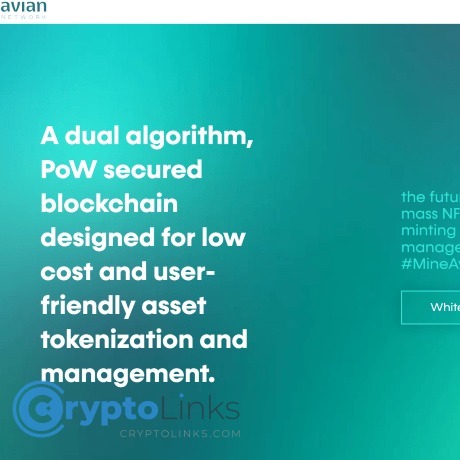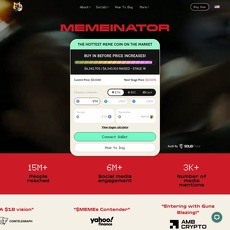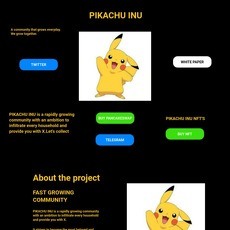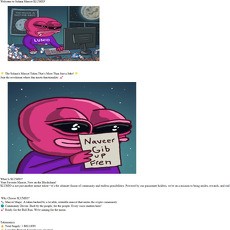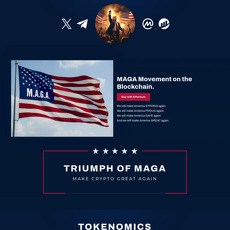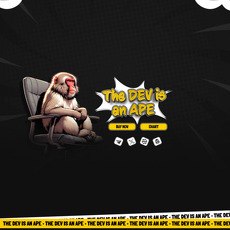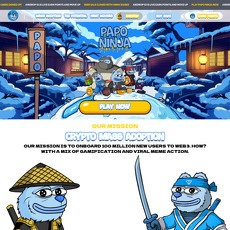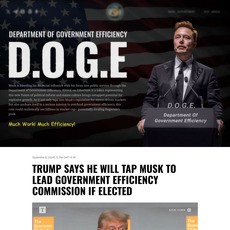Avian Network Review
Avian Network
avn.network
If your website is on the scam list and you think that you are not a scammer, contact us. After you provide us with all the proof that you are in Crypto World with good intentions, we will delist you. Usually, you get in this category because you are hiding your team, you have a bad reputation(you are tricking, deceiving, scamming people), and you haven't got a written project whitepaper or is a shitty one....
Their Official site text:
Avian Network Whitepaper
Version 1.9
Edited on 13th February, 2022
INDEX
Whitepaper v1.9 1
About The Team and Foundation 9
a) Avian Network and Our Algorithms 11
b) Tokenomics 1 (Basic & Mining Emissions) 17
c) Tokenomics 2 (Other Emissions) 20
d) Network Fees Structure 21
e) Assets 24
f) More About Tokens & Use Cases 30
g) Avian Flight Plans (Smart contracts) 42
h) Wrapped Avian on Polygon (WAVN) 50
i) Road Ahead, Milestones 51
j) Public Addresses and Links 53
Noteworthy Contributors 55
References 56
4
Avian Network Whitepaper
Version 1.9
Edited on 13th February, 2022
Abstract. Avian Network is a proof-of-work secured blockchain designed
for efficient and interoperable asset management. The network prioritizes
usability, automation, and low fees to make asset minting and management
simple, affordable, and secure. The network's economy runs on AVN, our
native coin that can be mined on a dual algorithm setup using either GPUs
or CPUs.
Introduction. Avian Network is an asset management platform designed for efficiency
and ease of use for the average user. The assets can be automated using Avian Flight
Plans allowing the creation of decentralized applications. The entire network is backed by
the native Avian coin, a dual algorithm PoW minable coin.
We believe asset tokenization will play a huge role in modern-day society, with secure
privacy-enabled asset transfers fueling globalization. Certain real-world assets can
benefit from the efficient, low-cost conversion known as “digital assets” which can be
sent to any corner of the world in seconds at a fraction of the cost of mailing or trading
real-world assets. With this global expansion comes the need for increased user control
and censorship resistance in the issuance and governance of digital assets.
FEES AND USABILITY
The asset minting and management interface will be designed using the average user in
mind. The goal is to design an interface and network that allows users to launch
businesses, crowdfunds, and communities using tokens that can be minted in the
collections in less than an hour at an affordable cost that is more accessible than the
most L1 blockchains on the market. At the current state of Avian, $0.0007 /AVN [750k
MCAP] and the current minting structure, you can mint a 10,000 token collection for
roughly 51,000 AVN or less than $40. This is 1000% cheaper than leading blockchains,
without the usability factor which is elaborated later.
ALGO AND COIN
The network is secured by a PoW dual algorithm minable coin called Avian. It can be
mined using a GPU on the X16RT algorithm and a CPU mining algorithm, called
MinotaurX. This dual algorithm setup for the network has decentralized the network by
5
Avian Network Whitepaper
Version 1.9
Edited on 13th February, 2022
improving the distribution of hashrate and giving a whole new class of miners access. The
block rewards are 2,500 AVN every 30 seconds, at a maximum supply of 21B coins. The
network ensures the constant balanced use of both the X16RT GPU & MinotaurX CPU
algorithms - guaranteeing equal rights for each community member to participate in a
block. The network transaction fees are one of the lowest in the industry, especially when
compared to leading L1 blockchains. Currently, at 0.0007 /AVN (750k MCAP), sending
$100 or roughly 142,000 AVN costs only 0.00150150 AVN, or $0.00000105105
in-network fees (that's 10,000th of a penny).
CENTRAL LOCATION
The asset minting and management experience will be in one application, the Avian
wallet. Within the wallet, you can not only view, transact, and manage your Avian coin,
but will be able to wrap your coins to WAVN for cross-chain operability on Polygon, and
soon other networks like ETH. Within the wallet, you will be able to start minting and
managing your token collection with ease. The interface will make it easy to decide token
quantities, rarities, benefits, and other functionality. Putting all the utilities in one wallet
gives the user one central location to work from and it makes the process easier for
everyone. Currently, you can run nodes on the wallet but these nodes do not reward the
host. It only takes a few clicks and less than 10 seconds to set them up to start
contributing to the network and help others sync their wallets.
USABILITY WITH NUMBERS
Having one coin (AVN) makes it easier for users to manage that currency or that
ecosystem's currency. It also helps simplify the experience by reducing the need to hop
through various other exchanges, DEXs, or bridges to start using the platform. While
interoperability is a priority for cross-chain functionality, users shouldn't have to take a
crash course on 4 platforms before they can get their coins and start minting.
In terms of numbers, our transaction fees are negligible, but the asset minting fees have a
fixed structure that lets you calculate the costs efficiently on the go. Each token in a
collection (however many) takes 5 AVN to mint each, you can easily multiply the number
of tokens by the price of Avian to predict your costs before you get to the wallet. Most
networks not only have you hop through hoops but make the calculations for average
users nearly impossible to calculate until you get on the platform and start minting.
6
Avian Network Whitepaper
Version 1.9
Edited on 13th February, 2022
UTILITY
In terms of utility, most top-performing blockchains require you to have a good technical
background or know a different programming language. It is technically beyond the
average user to not only launch a token collection, predict costs, but develop and code
the tokens' basic functionality. We believe everyone has the right to be able to tokenize
assets, as a global innovation designed for the masses it should not be reserved for a
specific group or class of investors and users. The wallet will simplify the process of
minting and managing digital assets while also making integrating functionality a breeze.
You can not only specify quantity and limitation, but you can also design whether your
collection is fungible or non-fungible. Users will also be able to build governance
functionality as a DAO, messaging for updates and DAO proposals, built-in discount
mechanisms, and profit-sharing for token holders using the Avian coin.
AVIAN FLIGHT PLANS
With the added development of Avian Flight Plans (AFP), our version of smart contracts
will give developers a chance to build in automation and add utility to the network. In
order to allow websites, mobile applications, and desktop applications to make use of the
Avian ecosystem, Avian Flight Plans will be in place to aid the developer. The use of
assets will be available not only for the average user but also for the developers to
harness. Executing flight plans require no fees of any kind and the only required fee is
either performing a transaction or minting an asset. Technical information regarding
flight plans can be found in Section G.
OPERATIONS
When the project launched on 1st September 2021 the development team did not take
any share or allocation for the foundation, running costs, or marketing from the total
supply. The foundation and the team operate on donations and personal funds. We play
fair at the same level as the entire community. The core team is not compensated in any
way, the only way for the team to make money is to mine the coin, buy it at market price,
or receive donations from the community. This simple reason has attracted some of the
most passionate and self-motivated individuals to our community.
Our fees being low do not facilitate any operational expenses and those fees are awarded
to the miners on top of the emissions. The few ways for the foundation to raise any funds
through the network would have to be through; donations, merch sales in the future,
7
Avian Network Whitepaper
Version 1.9
Edited on 13th February, 2022
asset minting when it is enabled and a possible future modification to the network fees
structure. We do not think it is important to have a high fee, or tax the coin and limit its
trading activity and use cases from being realized. The true potential of Avian lies in the
coins and the networks’ token’s ability to be efficiently transferred instantly. Though the
asset minting fee structure is fixed, this makes it predictable for the users and the
foundation in terms of cost, foundation fundraising, and burning for deflation. For the
foundation to start compensating and investing funds back into the network, asset
minting has to be fully-fledged and used by users around the globe.
8
Avian Network Whitepaper
Version 1.9
Edited on 13th February, 2022
About The Team and Foundation
Mission. Avian Network seeks to improve upon the existing foundations by implementing
the necessary updates and bug fixes needed to bring the original X16R fork of Ravencoin
up to par with modern cryptocurrencies.
A technical and creative audience that will take advantage of the asset creation and
management tools to launch endeavors, use tokens as a way to gather and reach a
specific group of people, and offer income/profit distribution with the AVN coin.
There are tons of ERC20 tokens built on the Ethereum blockchain. These ERC20 tokens
can be capped by supply limits, and special functions can be hardcoded through smart
contracts. On the other hand, we see Avian Network being used in 2 primary ways:
● Used for the real-world assets being tokenized like documents, images, artwork,
deeds, or any real-world asset or material that could use the benefits of a digital
token and its efficiency and security in transfer.
● Instead of currencies or tokens being used to show ownership in a project, Avian
Network will make it possible to use digital assets to represent ownership in any
group. Whether it be a startup, small business, campaign, crowdfunding,
community, fan club, organization, or group of people looking for a network that
makes it possible to use tokens (NFTs) as a representation of ownership, access,
and rights.
Instead of multiple projects with multiple currencies, we hope to achieve easier usability
through the ability to create projects that still operate independently with Web3
functionality, but still use one crypto coin for simplicity and usability, Avian (AVN).
In the future, we hope to build out the ecosystem by increasing usability and easier ways
to build-in functionality. Allow creators to modify the utility, functionality, governance,
and profit distribution all through tokenized assets. Avian will offer the backbone that
runs the whole operation of tokenizing your assets, whether it documents/ images, a new
project/business, or even a DAO-based project. One network, one coin, but multiple
tokens (NFTs/assets) projects trying to achieve different goals. Upon that we seek to
allow users a new way to launch campaigns, groups, events, businesses, organizations,
9
Avian Network Whitepaper
Version 1.9
Edited on 13th February, 2022
clubs, and more. We display a visual example on later pages.
Team. As an open community project, the entire core team generally stands between 15
and 20 part-time members and trainees from over 7 different countries. This number
may vary throughout the project's lifetime. We would like to iterate that there are no
full-time developers on the dev team as of this date. That being said, it doesn't stop us
from working on Avian for long hours, and being on the servers long past midnight,
constantly making improvements to the network. Every single one of us is dedicated to
the project and its success.
We are merely a group of dedicated community members who took matters into their
own hands. As such, the speed of development will greatly depend on the number of
contributors.
We hope to build a strong community that is hands-on with the project. A community
project’s foundation is its community and the support of its users. But more importantly
the contributions they make to the network, acting in self-interest directly benefits the
entire community. We encourage help through development, content creation,
marketing, moderation, or in any way possible.
10
Avian Network Whitepaper
Version 1.9
Edited on 13th February, 2022
a) Avian Network and Our Algorithms
The Avian Network is driven by the community, which is fully committed to its prosperity.
AVN ensures the consistent balanced use of the X16RT GPU & MinotaurX CPU
algorithms - guaranteeing equal rights of each community member to participate in
block production, with increased user control and censorship resistance in the issuance
and governance of digital assets.
Having started development on August 12th of 2021, Avian Network (AVN) is a fork of
Ravencoin Classic (RVC), aimed primarily at bringing the means of development back into
the hands of the community after RVC had been abandoned by its creators. With the
RVC GitHub locked, and software in disrepair, AVN seeks to improve upon the existing
foundations by implementing the necessary updates and bug fixes needed to bring the
original X16R-based implementation up to par with modern cryptocurrencies. This
project is being spearheaded by a group of enthusiasts, representing the interests of the
actual RVC community, as opposed to the original fork, which was taken over and
maintained by Chinese ASIC manufacturers looking to make a return on their machines
after RVN switched to the X16Rv2 algorithm.
Dedicated mining hardware
FPGA stands for Field Programmable Gate Array, meaning it can be programmed to
virtually do anything. GPUs are fast and efficient computing devices while FPGAs are
programmable devices. No algorithm can be fully FPGA resistant due to the key principle
of FPGAs: programmability. The best an algo can do is to count on market peculiarities
and make it difficult to program thus rendering FPGAs expensive, in terms of both
physical cost and effort, to mine on.
ASICs are Application Specific Integrated Circuits, which are generally more efficient than
FPGAs but rely on custom silicon, which limits their ability to adjust to algorithm changes
once produced. Multiple strategies exist to prevent the development of ASIC miners for
any given algorithm, with the two most popular solutions being a heavy usage of GPU
VRAM and a rotating series of chained algorithms. While neither solution is perfect, the
former has a major issue that discriminates against what consumer-grade hardware can
be utilized for mining based on VRAM capacity, as well as generating excessive heat in
comparison to core-focused hashing algorithms. This limits the viability of older GPUs
11
Avian Network Whitepaper
Version 1.9
Edited on 13th February, 2022
and contributes to e-waste, which is why Avian is dedicated to remaining ASIC resistant
without VRAM utilization.
Legacy
The original cryptocurrency, Bitcoin, started Proof of Work (PoW) using the SHA256
hashing algorithm, but as projects have forked from Bitcoin, it also brought about the use
of alternative algorithms. A common goal of these algorithms was to become
ASIC-resistant due to the fact that highly efficient ASICs began to dominate SHA-256
due to their simplicity, limiting the viability of decentralization through mining on
consumer hardware. Cryptocurrencies like Dash took the initiative to chain multiple
algorithms together, creating the family of X11 algorithms. It was proven to be ASIC
resistant, but ASICs for X11 were still eventually developed by Chinese manufacturers.
Another project, Ravencoin (RVN), noticed this and decided to design an ASIC-resistant
algo based on the X11 series; they created the X16R algorithm. X16R had the same
principle of chaining multiple algorithms together, but this time the order of the
algorithms was randomized based on the last 8 bytes of the previous hash, contrasting
with the sequential nature of previous chained implementations. Due to RVN’s early
popularity, dedicated mining hardware was eventually developed for X16R, which,
despite being highly inefficient, prompted Ravencoin to reverse their course and begin
work on a memory-intensive ProgPow variant, temporarily moving to a modified
algorithm called X16Rv2 while development was ongoing.
A group of volunteers wanted to keep the original X16R chain alive and created a new
cryptocurrency called Ravencoin Classic (RVC). Unfortunately, X16R and RVC were taken
over by Chinese ASIC manufacturers who exploited RVC for profit. A supporter of RVC
was upset by this and decided to fork RVC, making a new community-driven
cryptocurrency utilizing the X16R algorithm; thus Ravencoin Lite (RVL) was born. The
RVL project was faced with many of the same issues which plagued its predecessors and
saw the use of dedicated hardware on the network. While the aging and already
inefficient ASICs and FPGAs could barely compete with modern consumer GPUs in terms
of the hashrate to power ratio, it still went against the decentralized community-driven
spirit of the project. Realizing that, RVL performed an algo swap just 3 months into its
life, rebranding to Avian Network (AVN) upon the activation of the new PoW system. AVN
maintains the original visions of RVL and the projects that came before it by using the
12
Avian Network Whitepaper
Version 1.9
Edited on 13th February, 2022
X16RT and MinotaurX mining algorithms (both direct derivatives of X16R) to allow both
GPUs and CPUs to join the network.
The X16R background
The X16R algorithm1 consists of 16 hashing algorithms with the ordering dependent on
the last 8 bytes (16 nibbles) of the hash of the previous block. The algorithms are as
follows:
Hex (0-F)
0 = blake 1 = bmw 2 = groestl 3 = jh 4 = keccak
5 = skein 6 = luffa 7 = cubehash 8 = shavite 9 =simd
A = echo B = hamsi C = fugue D = shabal E = whirlpool
F = sha512
Example:
Previous Block Hash:
0000000000000000007e8a29f052ac2870045ae3970270f97da00919b8e86287
1 Tron B. & Joel W. “X16R”
https://ravencoin.org/assets/documents/X16R-Whitepaper.pdf
13
Avian Network Whitepaper
Version 1.9
Edited on 13th February, 2022
The final 8 bytes: 0x7da00919b8e86287
Each hex digit (1 nibble) determines which algorithm to use next.
(7) cubehash → (D) shabal → (A) echo → (0) blake → (0) blake → (9) simd → (1) bmw → (9)
simd → (B) hamsi → (8) shavite → (E) whirlpool → (8) shavite → (6) luffa → (2) groestl → (8)
shavite → (7) cubehash
Some of the hash algorithms take longer than others. This time difference tends to
average out across the 16 algorithms while mining each block.
How does X16RT work?
X16RT is a modification to X16R that makes use of the timestamp of the preceding block
as a seed to randomize the next block’s algorithm order, as opposed to the previous
block’s hash. This effectively kicks all existing dedicated X16R hardware off the AVN
network, requiring a hardware modification for ASICs to adjust to the new time-based
order generation. The idea of introducing time into the equation for determining the
order of chained mining algorithms is not unique to Avian, but our solution is extremely
14
Avian Network Whitepaper
Version 1.9
Edited on 13th February, 2022
simplistic, fitting in a mere 3 lines of code without introducing any additional complexity,
resulting in a lack of observable difference between the two for ordinary GPU miners.
Avian’s X16RT implementation vs original X16R ↴
How does MinotaurX work?
MinotaurX (often shortened to minX) is also based on X16R, adding a 17th algorithm,
YesPower, into the mix. YesPower is only mineable by CPUs and is strongly anti-GPU.
Combining the random aspect of X16R and YesPower allows MinotaurX to be a relatively
ASIC/FPGA resistant algorithm while allowing any CPU to participate in the network. It is
a simple and lightweight yet modern solution to the CPU algorithm question, which seeks
to extract optimum performance from consumer processors. The development of
MinotaurX can be traced back to Litecoin Cash (LCC); the original creators of the
algorithm. MinotaurX itself is forked from the Minotaur algorithm.
MinotaurX’s 17 algorithms are present below:
1 blake 2 bmw 3 groestl 4 jh 5 keccak
6 skein 7 luffa 8 cubehash 9 shavite 10 simd
11 echo 12 hamsi 13 fugue 14 shabal 15 whirlpool
16 sha512 CPU yespower
15
Avian Network Whitepaper
Version 1.9
Edited on 13th February, 2022
How does Avian’s dual algo system work?
The two algorithms work together by allowing CPU and GPU
miners a fair chance at mining AVN coins by utilizing the LWMA-3
2
difficulty algorithm to ensure each algo can only ever get around
50% of the blocks in a given window by using difficulty balancing.
In simpler terms, each algorithm is competing to get the next
block; in order to give each algo a chance to win, the difficulty
fluctuates using LWMA to balance the blocks between X16RT and
MinotaurX. Due to the nature of the algorithms, an exact 50% split
is not always achieved, but it comes extremely close to it. A graph
representing the blocks and respective algorithms can be seen
below.
Left: The X16RT and MinotaurX Blocks within a 1,000 block frame. (X16RT 51.84%, MinX 48.16%)
Right: The X16RT and MinotaurX Blocks within a 200 block frame. (X16RT 45.98%, MinX 54.02%)
2
linearly weighted moving average
16
Avian Network Whitepaper
Version 1.9
Edited on 13th February, 2022
b) Tokenomics 1 (Basic & Mining Emissions)
Block time: 30 seconds
Total Supply: 21,000,000,000 AVN (no pre-mine)
Emissions calendar: 12 years
Total emissions: ≈ 10,347,750,000 AVN
EMISSIONS CALENDAR
YEAR 1 YEAR 2
Block Reward AVN 2,500.00 Block Reward AVN 2,500.00
Emission AVN 2,628,000,000.00 Emission AVN 2,628,000,000.00
HALVING (AVN 2500 to AVN 1250)
YEAR 3 YEAR 4
Block Reward AVN 1,250.00 Block Reward AVN 1,250.00
Emission AVN 1,314,000,000.00 Emission AVN 1,314,000,000.00
HALVING (AVN 1250 to AVN 625)
YEAR 5 YEAR 6
Block Reward AVN 625.00 Block Reward AVN 625.00
Emission AVN 657,000,000.00 Emission AVN 657,000,000.00
HALVING (AVN 625 to AVN 312.5)
YEAR 7 YEAR 8
Block Reward AVN 312.50 Block Reward AVN 312.50
Emission AVN 328,500,000.00 Emission AVN 328,500,000.00
HALVING (AVN 312.5 to AVN 156.25)
YEAR 9 YEAR 10
17
Avian Network Whitepaper
Version 1.9
Edited on 13th February, 2022
Block Reward AVN 156.25 Block Reward AVN 156.25
Emission AVN 164,250,000.00 Emission AVN 164,250,000.00
HALVING (AVN 156.25 to AVN 78.13)
YEAR 11 YEAR 12
Block Reward AVN 78.13 Block Reward AVN 78.13
Emission AVN 82,125,000.00 Emission AVN 82,125,000.00
Avian Supply by Mining
Year 1 AVN 2,628,000,000.00
Year 2 AVN 5,256,000,000.00
Year 3 AVN 6,570,000,000.00
Year 4 AVN 7,884,000,000.00
Year 5 AVN 8,541,000,000.00
Year 6 AVN 9,198,000,000.00
Year 7 AVN 9,526,500,000.00
Year 8 AVN 9,855,000,000.00
Year 9 AVN 10,019,250,000.00
Year 10 AVN 10,183,500,000.00
Year 11 AVN 10,265,625,000.00
Year 12 AVN 10,347,750,000.00
18
Avian Network Whitepaper
Version 1.9
Edited on 13th February, 2022
*Graph above represents Avian supply emissions by mining over a 12 year period
19
Avian Network Whitepaper
Version 1.9
Edited on 13th February, 2022
c) Tokenomics 2 (Other Emissions)
Total Mined: ≈ 10,347,750,000 AVN
Remaining Supply: ≈ 10,347,750,000 AVN
Currently, only ≈49.3% of the total 21B supply is going to be mined on a 12-year halving
schedule. The remaining 50.7% is going to be distributed by other methods, giving AVN
holders another way to take part in the distribution. This method will not include
hardware mining algorithms like our existing hybrid GPU and CPU algorithm
combination.
This half of the supply has to allow us to:
➔ Create a more fair token distribution
➔ Increase accessibility for early investors
➔ Provide long term value and return to the holders
➔ Provide value to the network
➔ Be distributed more power-efficient than the other 50%
➔ Reduce volatility, provide more stability to the network and price
20
Avian Network Whitepaper
Version 1.9
Edited on 13th February, 2022
d) Network Fees Structure
Avian only has transaction fees similar to Bitcoin; there is no private, public, founder, or
developer allocation set aside. Transaction fees are based on the size of a transaction
which is made up of many inputs and outputs. A single block can hold up to a maximum
of 2MB, therefore larger transactions require larger fees. Transaction fees can also
determine the speed of the transaction. If there is a backlog of transactions, a higher fee
will create an incentive for miners to include it in the next block. When the amount of
transactions is lower, the transaction fees are lower. This nature causes the fees to
fluctuate based on the number of transactions the network receives. A minimum fee of
0.0005 AVN/kB is required and the wallet will automatically calculate the fee for the
transaction. The formulas below can be used to roughly calculate the transaction size and
fee.
Transaction size formula

